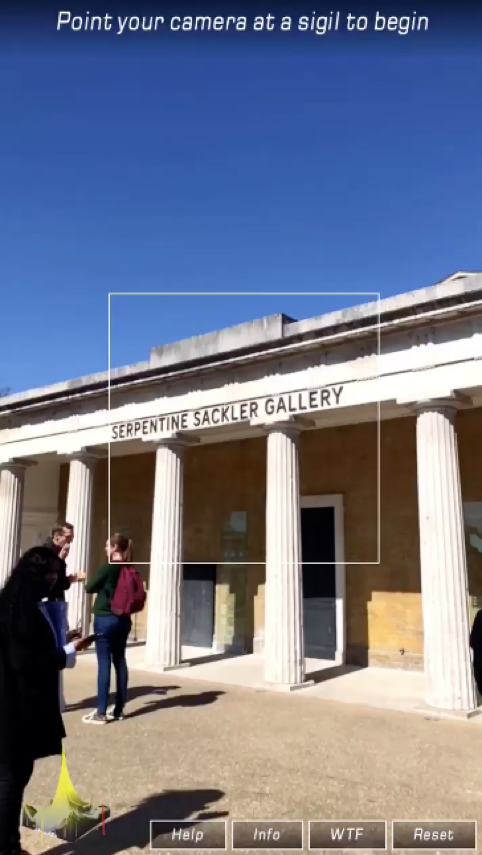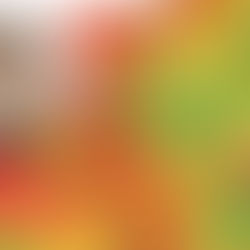'Hito Steyerl: Power Plants' Review - The Serpentine Gallery
- Camille Chu
- Apr 12, 2019
- 5 min read
11th April - 6th May 2019
Serpentine Sackler Gallery
FREE entry
Who is Hito Steyerl, the German digital artist working on obscure themes such as surveillance and unequal wealth distribution? What reality does she depict in her new project presented at the Serpentine Sackler Gallery? Opening on the 11th April, the show gives us a glimpse of the world as she sees it thanks to Augmented Reality and Artificial Intelligence technologies. As a digital visual artist and engaged filmmaker, Hito Steyerl considers important topics such as power and inequality in society under the prism of new technologies and digital mediums. More importantly, she took the opportunity to address a serious issue, what she calls an 'elephant in the room': the association of the Serpentine Gallery with the Sackler family, who are complicit in the Opioids crisis taking place in the US.
'Technology has this in common with magic, both usually don’t work'
Visiting Hito Steyerl’s show at the Serpentine Gallery is like walking in a field of digital flowers, a temple of ancient yet electronic symbols, an archaeological site of the future. Equipped with our smartphone as a tool of extraction of meaning throughout the exhibition, visitors can download an augmented reality app to expand their vision of Hito Steyerl’s artworks which are presented in two projects.

Images provided by Camille Chu
The first project Power Plants is installed inside the gallery space and features a new video installation co-commissioned by The Store X (you might have passed in front of the London-based concept store located right next to King’s College Stand campus). This part of the show presents videos of plants and flowers generated by an Artificial Intelligence which calculates and predicts the future: what you see on the screen are 0.04 seconds in the future. Hito Steyerl has created what she describes as a 'documentary image of the future', which allows us to literally see ahead of time.
Thanks to our smartphones, and the Power Plants augmented reality app, we can also find the location of fifteen animated sigils dispatched in the gallery, point our phones towards these enigmatic symbols and activate a whole new reality. Through our screen we see words flourishing all over the exhibition space, floating in the air. We can read botanical descriptions of future plants and fictitious quotes dated in the future. The quotes may be serious, like those of Ricarda Deakin, an English doctor of the future that has written (or will be writing) a book in 2045, Flora of the Future Garden. Other quotes are much more humorous and embrace self-criticism: 'This game is total crap. You can’t shoot anything at all and there’s just a bunch of weirdo AI salads wobbling around (…) I give it a zero star review. Serious shite, man', from an anonymous Yelp review of Steyerl’s own exhibition dated Summer 2019. Between austerity and humour, Steyerl reminds us that the use of technology might not be entirely glorified. It could instead impact our natural environment in many ways. The artist wants us to step into a ruderal garden, an ensemble of plants that grow out of waste grounds in the wake of human disruption or destruction.[if gte vml 1]><o:wrapblock><v:shape id="officeArt_x0020_object" o:spid="_x0000_s1027" type="#_x0000_t75" style='position:absolute; left:0;text-align:left;margin-left:34.8pt;margin-top:16.6pt;width:189.2pt; height:337pt;z-index:251659264;visibility:visible;mso-wrap-style:square; mso-wrap-distance-left:12pt;mso-wrap-distance-top:12pt; mso-wrap-distance-right:12pt;mso-wrap-distance-bottom:12pt; mso-position-horizontal:absolute;mso-position-horizontal-relative:margin; mso-position-vertical:absolute;mso-position-vertical-relative:line' strokeweight="1pt"> <v:stroke miterlimit="4"></v:stroke> <v:imagedata src="file:////Users/godelievedebree/Library/Group%20Containers/UBF8T346G9.Office/msoclip1/01/clip_image003.jpg" o:title=""></v:imagedata> <w:wrap type="topAndBottom" anchorx="margin" anchory="line"></w:wrap> </v:shape><v:shape id="_x0000_s1028" type="#_x0000_t75" style='position:absolute; left:0;text-align:left;margin-left:240.45pt;margin-top:12.9pt;width:191.3pt; height:340.7pt;z-index:251660288;visibility:visible;mso-wrap-style:square; mso-wrap-distance-left:12pt;mso-wrap-distance-top:12pt; mso-wrap-distance-right:12pt;mso-wrap-distance-bottom:12pt; mso-position-horizontal:absolute;mso-position-horizontal-relative:margin; mso-position-vertical:absolute;mso-position-vertical-relative:line' strokeweight="1pt"> <v:stroke miterlimit="4"></v:stroke> <v:imagedata src="file:////Users/godelievedebree/Library/Group%20Containers/UBF8T346G9.Office/msoclip1/01/clip_image004.jpg" o:title=""></v:imagedata> <w:wrap type="topAndBottom" anchorx="margin" anchory="line"></w:wrap> </v:shape><![endif][if !vml]
[endif][if gte vml 1]></o:wrapblock><![endif]

Images provided by Camille Chu
Outside the gallery, Hito Steyerl presents her second project, Actual Reality. Once again, Steyerl explores the notions of power and technology, but this time, she looks at data about inequalities of the surrounding areas of the Serpentine Gallery. Our mobile phones allow us to scan sigils outside the gallery and the app acts like a tool for data visualisation bringing together augmented reality and strategies of data collection and mapping. Thanks to our mobile devices, we can see a real-time composite of virtual imagery in the physical environment surrounding us, based on inequality data concerning wealth, income and social housing of the Royal Borough of Kensington and Chelsea. As we point our phone towards the Serpentine Gallery building, we can see the actual reality of London’s wealth distribution: the bottom half of London’s population own 5.3% of its total wealth, whereas the top 10% own 52.1%, which is reconstructed as an oversized 3D graph. The data visualisation opens our eyes in a striking way, as the architecture of the Serpentine Gallery becomes the base of a data reconstruction showing us the stark reality of inequality in London. Actual Reality is a tool for visualising unseen information underlying our society. Moreover, Hito Steyerl’s art magically conceals the 'Serpentine Sackler Gallery' name, as an act of dissent and protest against a morbid sponsorship the Serpentine Gallery is tied to.[if gte vml 1]><o:wrapblock><v:shape id="_x0000_s1026" type="#_x0000_t75" style='position:absolute;left:0; text-align:left;margin-left:124.9pt;margin-top:25.6pt;width:231.1pt;height:410.15pt; z-index:251661312;visibility:visible;mso-wrap-style:square; mso-wrap-distance-left:12pt;mso-wrap-distance-top:12pt; mso-wrap-distance-right:12pt;mso-wrap-distance-bottom:12pt; mso-position-horizontal:absolute;mso-position-horizontal-relative:margin; mso-position-vertical:absolute;mso-position-vertical-relative:line' strokeweight="1pt"> <v:stroke miterlimit="4"></v:stroke> <v:imagedata src="file:////Users/godelievedebree/Library/Group%20Containers/UBF8T346G9.Office/msoclip1/01/clip_image007.png" o:title=""></v:imagedata> <w:wrap type="topAndBottom" anchorx="margin" anchory="line"></w:wrap> </v:shape><![endif][if !vml]

Images provided by Camille Chu
'Imagine you were married to a serial killer and wanted a divorce; it shouldn’t be a problem to get a divorce'
The show’s colourful shapes and blooming flowers hide a more tragic reality. During the preview of her show, Steyerl denounced the long history of links between the Serpentine Gallery and the Sackler philanthropy. The Sackler family owns Purdue Pharma, which is behind OxyContine, one of the painkillers at the centre of the US Opioids crisis. As an engaged artist, Steyerl brought up the dilemma of exhibiting in a venue that bears the name of Sackler and even asked to the Serpentine Gallery to remove the Sackler name from the buildings and publicly declare their position towards future donations from the Sackler family. She compared the sponsorship to a marriage with a serial killer and concluded, 'it shouldn’t be a problem to get a divorce'. Previously, the gallery has defended its Sackler funding, but during the preview, it was the opportunity to tackle the issue. After Hito Steyerl’s speech, a spokesperson of the Serpentine announced the institutions’ change of position: 'We’ve heard what Hito Steyerl has had to say today on the eve of her exhibition at the Serpentine and the important issues that she has highlighted'. She added, 'donations to the Serpentine from the Sackler Trust are historic and we have no future plans to accept funding from the Sacklers'. This decision follows a series of similar announcements by the National Portrait Gallery, the Tate and the Guggenheim, which all decided to stop accepting donations from the Sackler Trust following the Opioid scandal.
Hito Steyerl is a prime example of an artist speaking out on the issues that plagues our society. She does so throughout her artworks centred on themes of societal powers and inequality, but also, through the denunciation of the art system she is embedded in, showing us new ways to approach and change reality.
Edited by Dimitrina Dyakova, Deputy Digital Editor
































